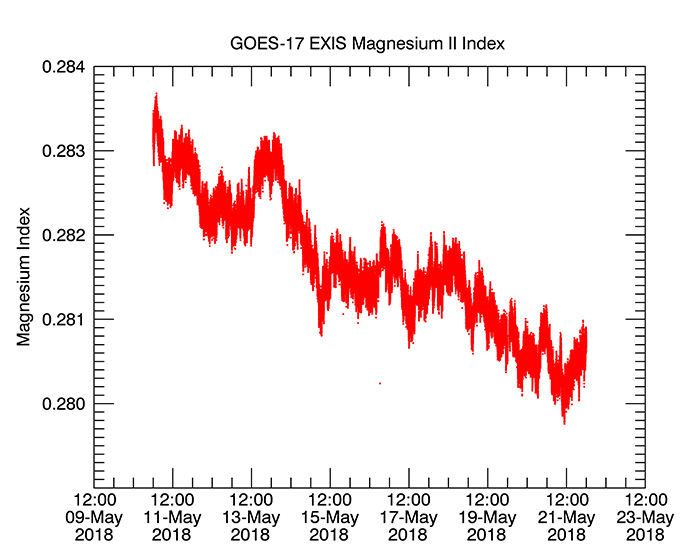Data Products: Solar Flux: EUV

The GOES-R Series Extreme Ultraviolet and X-ray Irradiance Sensors (EXIS) instrument includes a sensor that measures extreme ultraviolet (EUV) light from the sun. EUV radiation has major impacts on the ionosphere. Increased EUV radiation can result in radio blackouts of terrestrial high frequency (HF) communications. Increased EUV energy deposited in the Earth’s upper atmosphere (thermosphere) also results in increased atmospheric drag on satellites in low earth orbit (LEO). This EUV product provides improved measurements of these important wavelengths and information that assists operators of radio communication and navigation systems and satellites.
EXIS measures multiple x-ray and ultraviolet wavelengths. The specific wavelengths were chosen to monitor the different layers of the sun’s outer atmosphere and will be combined to create the full EUV spectrum of the sun every 30 seconds.